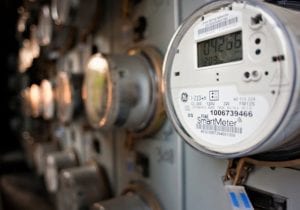If Treasury modelling is right, about half of household carbon cost will be included in energy bills, which are now about 3 per cent of household expenditure. That means the carbon cost on energy adds about 0.3 per cent to living costs. And the other half of the carbon cost is spread very thinly over the remaining 97 per cent of living costs.
Focusing on cutting energy use delivers the biggest outcome for effort.
For electricity, Australian households pay around 25 cents per kilowatt-hour, the standard unit. The carbon cost will add 2 to 3 cents to that. If you can save 10% of your electricity use, you will offset your carbon cost. A similar rule applies for gas.
For an average household, energy costs around $2000 annually, or $40 a week. Saving at least $4 on your weekly energy use will offset your energy related carbon costs. Around $10 saved on your weekly energy will offset all your carbon costs.
The activities to target will depend a lot on your household’s energy usage patterns. Give some thought to which activities are your big issues. Tools such as the EPA Victoria’s Australian Greenhouse Calculator or the NABERS residential calculator can help. Or you could consider an energy assessment, offered by many private businesses and energy retailers.
You can also buy reasonably accurate plug-in electricity meters now, for as little as $25 at electronics stores and even some supermarkets. Since it’s often very difficult to identify energy wasting appliances visually, a meter can confirm waste before you make big changes.
Here are some areas worth targeting to save that $4 to $10/week – or more:
- A second fridge (even a small one) can use $2 to $5 of electricity each week. Many of these are old and inefficient. Switch it off except when you really need it.
- Running a clothes dryer costs about 75 cents a load. Even partly drying the clothes can shorten drying time and cost.
- If you have 10 halogen downlights in a room, they cost about 15 cents an hour to run. Over 40 hours a week, that’s $6. There are many ways to cut this cost. Simply fitting blown lamps in half the sockets (to fill the holes) will save $3 each week, and you should still have plenty of light at no cost! Many homes have a lot more halogen lamps, and can save much more. High efficiency compact fluorescent or LED lamps will save 60-80%. But you need to select your option carefully: go to a green shop or lighting specialist for advice. Of course, you could just make sure lights are turned off when they’re not needed.
- Standby power (electricity used by appliances when they’re not doing anything) costs an typical household around $3 to $4 each week. Any appliance that feels warm when not in use is wasting standby power, turning it into heat, and the warmer the more waste. Switching off saves.
- If you heat or cool a lot, sealing out draughts and turning the thermostat down just one degree (or up for cooling) can save 10 to 20%. And leaving the heater or cooler on low all the time doesn’t save energy, it wastes it.
- If you use electric hot water, every 20 litres costs around 15 cents (for off peak electricity) and a typical household uses 120 litres a day. So cutting usage by a third through hot water saving measures can save $2 a week – plus the cost of the water. Surprising ways hot water is wasted include rinsing dishes under running hot water (5 litres a minute) and flushing out cold water from hot water pipes to draw off a small amount of hot water.
- If you have a large old plasma TV, it can cost 10 cents an hour to run. The most efficient new models cost more like 2 cents an hour. Use a radio for company instead of leaving the TV on.
- Running a pool filter pump costs a lot – around 25 cents an hour. Talk to your pool shop about alternative ways of managing your pool.
- If you’re buying new appliances look for a high energy rating: there are big savings to be made.
If you’re buying a new house, the extra cost due to carbon may be from a few hundred dollars to a couple of thousand dollars, depending on who you believe. The simplest way to offset this cost is to trim a few square metres off your new house’s size: it will also be a little cheaper to heat, cool, light and maintain. And make sure you invest in at least 6 star energy efficiency – preferably 7 to 8 stars. And including the cost of solar electricity panels in your mortgage is now a reasonably good long term investment that should be cash-flow positive from year one.
Of course, most households will be compensated for much or all of their carbon cost, so these actions make you into a financial winner! How’s that, Tony?
Alan Pears is a senior lecturer in Global Studies, Social Science & Planning at RMIT University
This article was originally published on The Conversation – theconversation.edu.au. Reproduced with permission.









